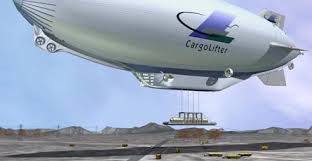
Breaking News
 Global Exclusive: The January 6th Pipe Bomber's Identity Has Been Discovered,...
Global Exclusive: The January 6th Pipe Bomber's Identity Has Been Discovered,...
 Capitol Police Officer Shauni Kerkhoff Identified as J6 Bomber...
Capitol Police Officer Shauni Kerkhoff Identified as J6 Bomber...
 Why Dual Engine Failure Changes Everything -- Louisville Crash Update
Why Dual Engine Failure Changes Everything -- Louisville Crash Update
 Transforming Storage Shelf / Workbench - Small Space Organization
Transforming Storage Shelf / Workbench - Small Space Organization
Top Tech News
 HUGE 32kWh LiFePO4 DIY Battery w/ 628Ah Cells! 90 Minute Build
HUGE 32kWh LiFePO4 DIY Battery w/ 628Ah Cells! 90 Minute Build
 What Has Bitcoin Become 17 Years After Satoshi Nakamoto Published The Whitepaper?
What Has Bitcoin Become 17 Years After Satoshi Nakamoto Published The Whitepaper?
 Japan just injected artificial blood into a human. No blood type needed. No refrigeration.
Japan just injected artificial blood into a human. No blood type needed. No refrigeration.
 The 6 Best LLM Tools To Run Models Locally
The 6 Best LLM Tools To Run Models Locally
 Testing My First Sodium-Ion Solar Battery
Testing My First Sodium-Ion Solar Battery
 A man once paralyzed from the waist down now stands on his own, not with machines or wires,...
A man once paralyzed from the waist down now stands on his own, not with machines or wires,...
 Review: Thumb-sized thermal camera turns your phone into a smart tool
Review: Thumb-sized thermal camera turns your phone into a smart tool
 Army To Bring Nuclear Microreactors To Its Bases By 2028
Army To Bring Nuclear Microreactors To Its Bases By 2028
 Nissan Says It's On Track For Solid-State Batteries That Double EV Range By 2028
Nissan Says It's On Track For Solid-State Batteries That Double EV Range By 2028
CargoLifter CL160, Germany

In May 2002, the CL 160 development was halted due to financial problems and the status of the programme is uncertain. In June 2002, the company made an application for insolvency. In August 2002, work on Cargolifter's other major programme, the CL 75 lifting balloon was also halted.
Heavy loads, for example large turbine casings, can be carried directly from the factory to their intended operations location, without the airship touching the ground and almost independently of local infrastructure. Described as a "flying crane", the CL 160 will be able to carry payloads weighing up to 160 metric tons, with a volume of up to 3,200 cubic metres, to a range of up to 10,000 km, without the need for airfields or extensive road systems. The CL 160 could also be used in transporting humanitarian and emergency aid – one CL 160 could transport food for 25,750 people for 14 days in a relief programme.

 Carbon based computers that run on iron
Carbon based computers that run on iron

